100th Anniversary Great Nave Tour at the Cathedral of St. John the Divine
Celebrate the 1925 construction of the stunning nave inside the world's largest Gothic cathedral!

Uncover the secrets of the Elizabeth Street Garden, a beloved green space filled with an eclectic array of sculptures in NYC!

The eclectic array of sculptures and pieces of architectural salvage within the Elizabeth Street Garden, a community green space in Manhattan’s Little Italy, give the urban oasis a character all its own. Created by gallery owner Allan Reiver in 1991 in an abandoned city-owned lot, the garden has blossomed into a beloved community space. Loved as this space is, however, it is under threat of development by city officials. Throughout a longstanding legal battle against plans for a housing development, the garden has received multiple eviction notices. Though the garden has appealed every notice, the latest may cut off public access at any moment. Uncover the history of this space and find out how you can help save it!
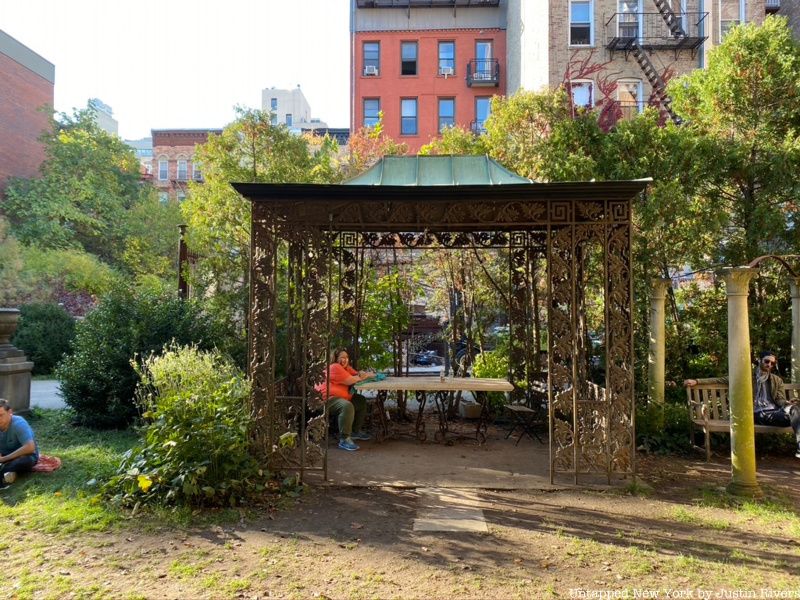
Many of the pieces found within the garden were sourced from Gilded Age estates, including an iron gazebo with ties to renowned landscape architect Frederick Law Olmsted. Olmsted is most famously known for designing Central Park, though he did commissions all over the country. When Olmsted passed away, his two sons, John and Frederick Jr. kept the family business alive under the name of Olmsted Brothers. One of the first commissions the brothers took was at the Burrwood Estate in Cold Spring Harbor, Long Island.
Burrwood was the Gilded Age estate of Walter Jennings, a director, and secretary of the Standard Oil Company. Jennings picked Carrere & Hastings, the architect duo who designed the Standard Oil Building, the Cunard Building, and the New York Public Library’s main branch, to design his five-story, fifty-room mansion inspired by the manor houses of England. The Olmstead Brothers were hired to design additional gardens on the estate’s 400-acres of land. To decorate the garden, the brothers designed the elaborate iron gazebo now found at the Elizabeth Street Garden. At the estate, the gazebo stood in front of a grassy clearing, framed by a sculpture on either side. One New York Times article refers to the gazebo as a replica, though documents from the Elizabeth Street Garden refer to it as the real thing. The gazebo is a frequent setting of weddings and other events held in the garden.
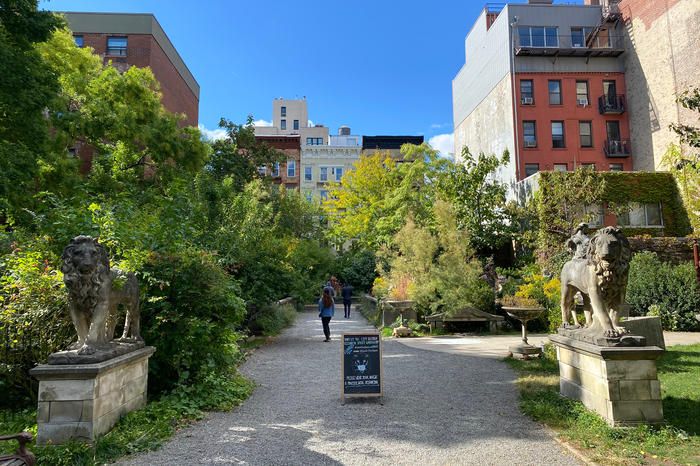
“We noticed when we started doing a lot of research into the history of the space that there was this common theme of outdoor recreation even before it was a community garden,” Executive Director Joseph Reiver said on Untapped New York’s first tour of the garden. In 1822, the Free School Society opened Public School No. 5 on Mott Street, taking up part of the lot on which the garden occupies. In the evenings, the school held free night classes for people of color and, to further promote community engagement, hosted public educational lectures for children and adults.
In 1902, PS 5 was torn down and replaced by Public School No. 21, a larger structure designed by noted school building architect C. B. J. Snyder. Prominent in the school’s design was a 75 by 108-foot playground where the children could have recess. The outdoor spaces at the school also served as community meeting spots and open-air classrooms. This outdoor time was seen as an important way to help ward off tuberculosis. In the 1970s, the school building was torn down to make way for affordable housing on the south portion of the lot. While a community space was included in plans for the Little Italy Restoration Apartments (LIRA), it never came to fruition. The remaining 20,000 square feet of open space on the lot were left abandoned.
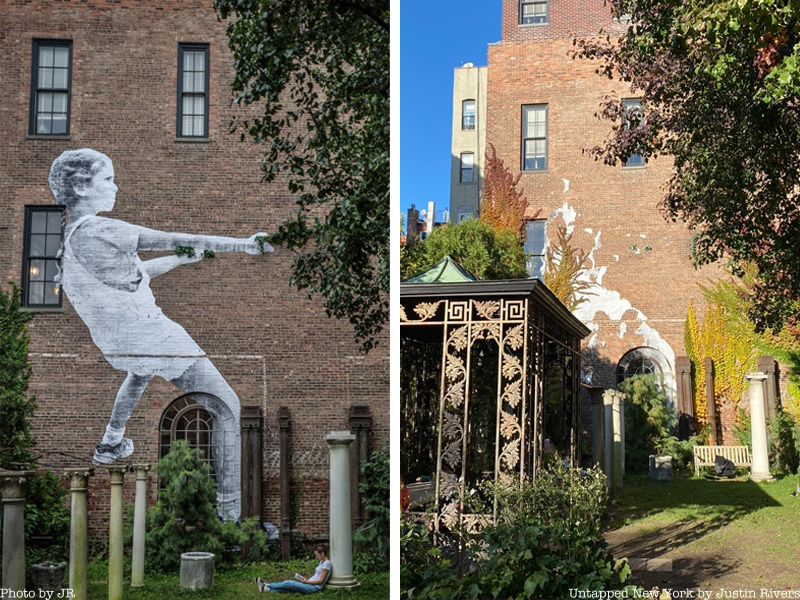
World-renowned street artist JR has left his mark on various locations all over New York City, including the Elizabeth Street Garden. JR is known for his signature pastings, in which he takes an image, enlarges it to a massive scale, and pastes it on a building. At the Elizabeth Street Garden, JR has actually installed two pieces, one of which you can still see remnants of today. The first installation JR brought to the green space was a giant pasting of a photograph of two people leaning out a window. The second was a rallying call to save the garden.
In 2018, The Uniform Land Use Review Process (ULURP) began to review and vote on plans to develop the site of the Elizabeth Street Garden. As a symbol of support and encouragement, JR created the installation you see above. The photograph depicts one of the garden’s youngest volunteers holding onto a tree in the garden. The image represented the determination of the Elizabeth Street Garden volunteers and community members to save the space.
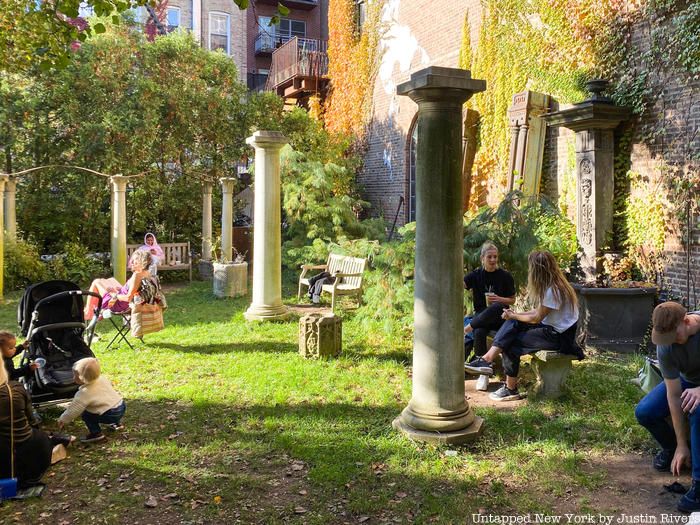
When promised plans for a green space to accompany the affordable housing that replaced PS21 weren’t followed through, the lot on which the Elizabeth Street Garden now flourishes was just a derelict piece of land. It remained largely untouched for a decade until Allan Reiver came along in the 1990s and transformed it into the whimsical sculpture garden we know today.
In 1991, Reiver began to lease the lot on a month-to-month basis. Working diligently, he cleaned up the space, planted a lawn and two large pear trees, and laid out the garden’s foundation. He brought in various sculptural pieces from his collection, including a large balustrade from a Pennsylvania estate and statuary. At first, the garden wasn’t open to the public but was enjoyed by neighbors who found out about it through word of mouth. In 2005, Reiver purchased a gallery space next door, and visitors could access the garden from there. By 2013, the garden had become a beloved space in the community. When plans were announced to build over it, neighbors and local businesses rallied and made the space more accessible to the community. Elizabeth Street Garden, Inc. (ESG), a nonprofit that manages and maintains the Garden, officially took control of the space in 2017. The 100% volunteer-run organization ensures that the garden is open to the public seven days a week, all-year-round, and facilitates a variety of public programs.
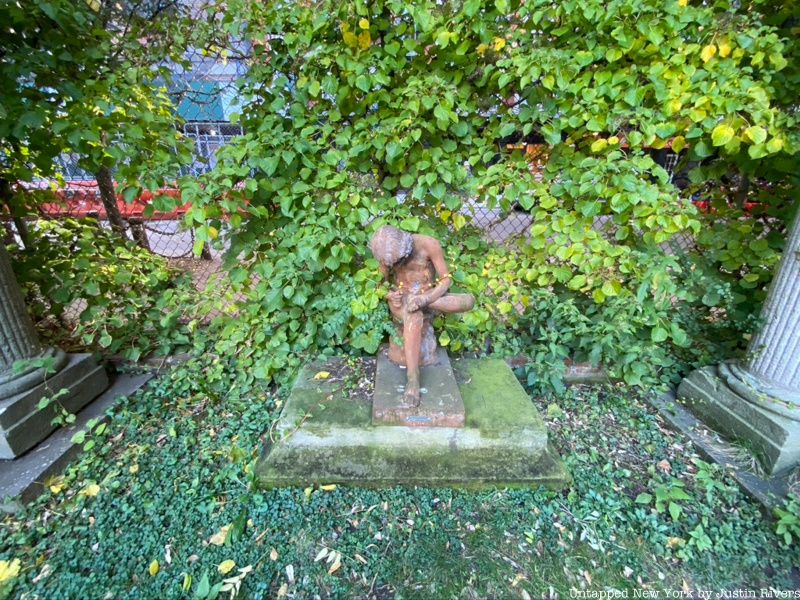
Tucked along the edge of the garden is a small sculpture of a little boy pulling a thorn from his foot. This sculpture is one of the many pieces in the garden’s array of artwork. The statue is a replica of the Boy with Thorn (Spinario), a marble sculpture now in the collection of the Uffizi Gallery in Florence, Italy. The piece in the Uffizi is from Greece and is estimated to have been created in the 1st century BC.
A boy pulling a thorn from his foot became a popular symbol in ancient art. The imagery traveled to Rome where it took on the identity of Ascanius, according to the gallery, the founder of the dynasty of Julius and Augustus Caesar. Many replicas of the early Grecian and Roman sculptures were made including a bronze version that was found in the 12th century, and the sculpture found in the Elizabeth Street Garden.
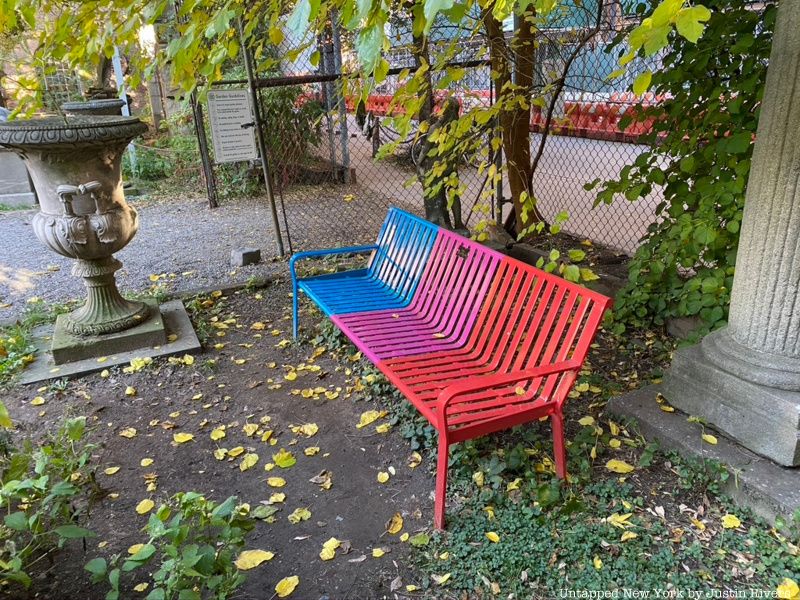
Amid the weathered stone sculptures of the Elizabeth Street Garden, a multi-colored bench stands out with its vibrant colors. The bench was designed by Color Factory and is a site-specific piece that pays homage to the historic Little Italy neighborhood. The three colors of bench reflect the colors of the three rowhouse buildings on Mott Street that you can see from the Garden.
A plaque on the bench has a phone number that visitors are encouraged to call to learn more about the colors. When you call the “Color Hotline,” a voice describes where each color can be found in New York City. For example, purple can be found on “FedEx slips and sunset clouds. It’s the color of the 7 line.” For this site-specific piece, the hotline also explores the color green. When you press extension 4, Ella, the Creative Director of the Elizabeth Street Garden explains just how important green spaces are for New York City.
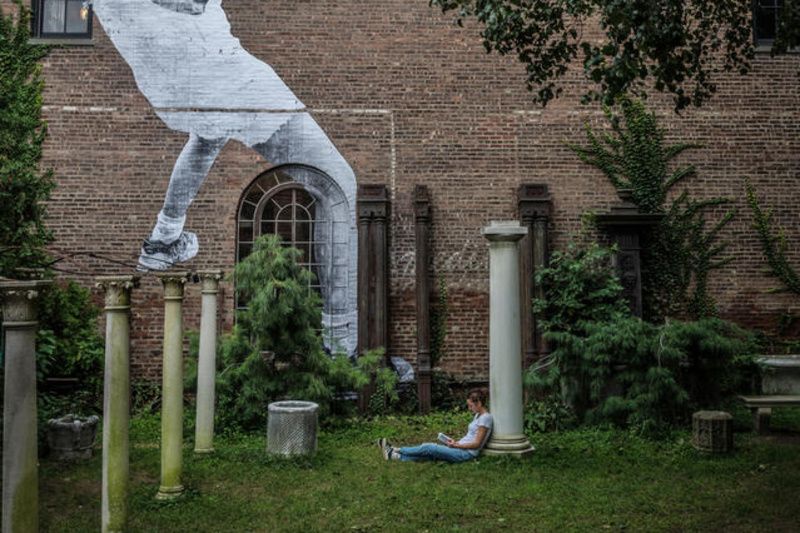
On the same wall of the garden where you will see the remnants of JR’s pasting, you can also find the remnants of another feature. Right above the arched window of the neighboring building, you’ll notice the square outline of what used to be a handball court where local community members would play.
The building on which the court once stood, 209 Elizabeth Street, is an 1870s firehouse, formerly the home of Hook and Ladder No. 9. It was later turned into a bakery by La Rosa & Son Bread Co., the name that is still painted above the door. In 2005, this building became the Elizabeth Street Gallery. Inside, Allan Reiver displayed the items he had collected over the past fifty years.
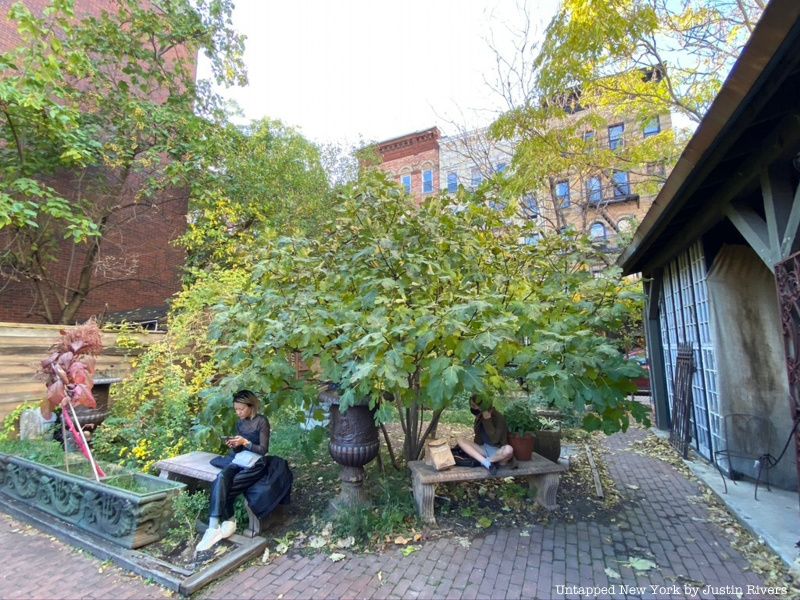
When Allan Reiver began to transform the abandoned lot on Elizabeth Street into a flourishing garden, one of the first things he planted was a pair of Bradford pear trees. The two trees on the main lawn don’t produce any fruit, but the do spring beautiful white blossoms in the spring that float through the air in the wind.
Other notable trees in the garden include a fig tree planted by Joseph Reiver and his mother. Visitors are welcome, and encouraged, to pick the figs for themselves as the tree produces so many they weigh down the branches. Another fruit-bearing tree you can find in the garden is a plum tree.
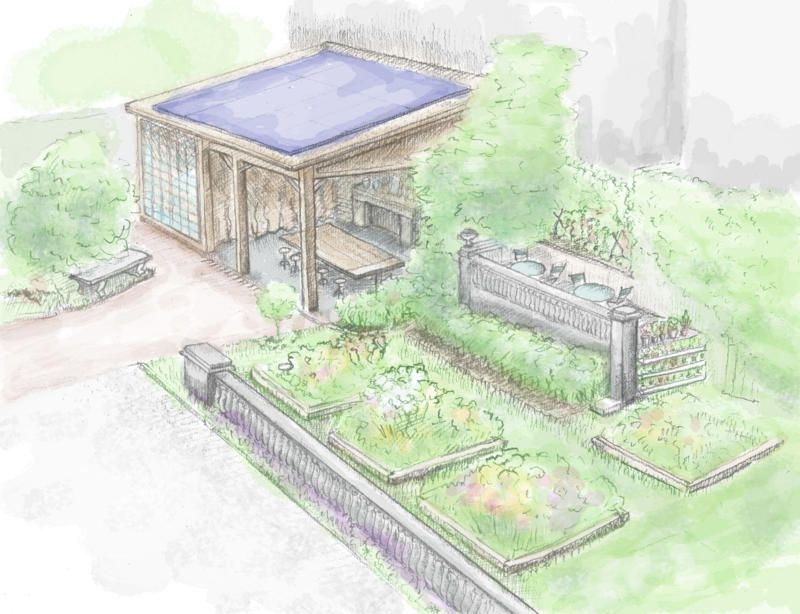
In addition to the fruit-bearing trees, you can also harvest vegetables and herbs from the Elizabeth Street Garden. The growing gardens are open to all community members. Growing in the garden you could find eggplants, tomatoes, herbs, and flowers. Since the gardens are open to all, there are no assigned plots, everyone is welcome to plant and forage what is grown.
The plants at the Elizabeth Street Garden also foster a healthy butterfly community. The garden is actually designated as a monarch butterfly waystation. Local schools often visit the garden for butterfly workshops.
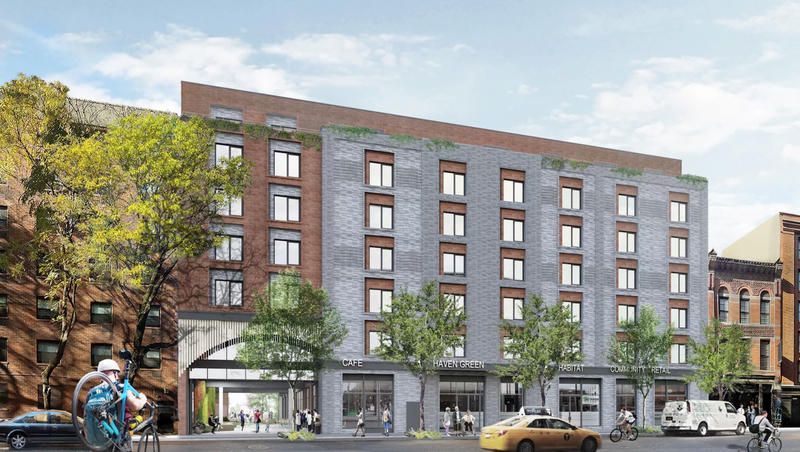
Since 2012, when plans to create an affordable housing complex on the site were revealed, the garden has been under the constant threat of development. The development project, called Haven Green, includes a mixed-use building designed by Curtis + Ginsberg Architects and developed by Penrose Development, LLC. In the summer of 2019, the City Council approved plans for the project to go forward, but the Elizabeth Street Garden has its own proposed plans for an alternate affordable housing site in the same district. That same year, Elizabeth Street Garden filed a lawsuit against the City of New York and the Department of Housing and Preservation and Development (HPD) with attorney Norman Siegel.
In 2024, the garden was granted a temporary stay of eviction last fall. On February 18, 20025, a federal lawsuit was filed under the Visual Artists Rights Act (VARA) to help protect that space. Through the legal battle continues, the City may cut of public access to the site at any moment.
Elizabeth Street Garden hopes to be successful in the legal battle to save the garden and turn it into a community land trust. In this scenario, the garden would maintain its sculptures and community gardens and would be enhanced by other projects including a new greenhouse conservatory for year-round gardening, a composting station, and a solar-paneled roof, among other features. You can donate to the garden’s legal fund here and write to local officials on the garden's behalf!
Next, check out 10 of NYC’s Elevated Parks and Hidden Gardens
Originally published June 2021, updated March 2025
Subscribe to our newsletter